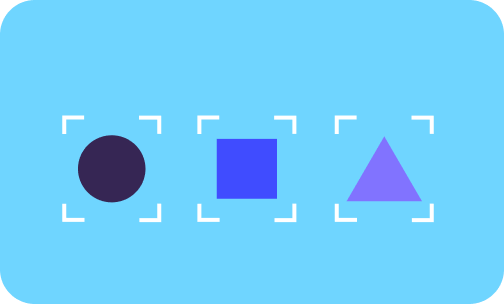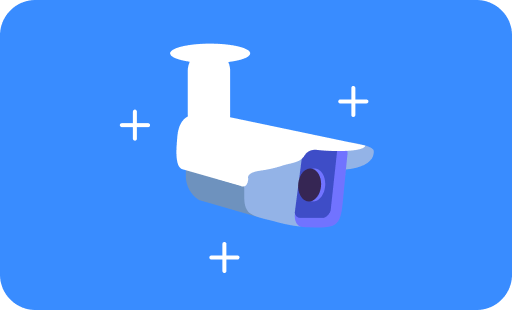What are edge analytics?
- Featured Post
- Technology
- FILTER_Technology

If you’re looking up analytics for your security system, you might hear the terms “on the edge” / “at the edge”, or “edge analytics”. Understanding the difference between edge analytics and other analytics can seem technical, even overwhelming. In fact, it’s pretty simple - so let’s get started.
So, what are edge analytics?
Edge analytics are analytics applications that function within a device. They do exactly the same job as cloud or server-based analytics; the only difference is where the data analysis takes place. For example, many security cameras have in-built video analytics - we’d refer to these as “edge analytics”, because this embedded technology analyses data as the camera records it.
This technology isn’t confined to security cameras. All kinds of devices employ it - pretty much any internet-connected device within the Internet of Things (IoT) uses edge computing.
Why are some analytics on the edge?
To understand why edge analytics are so popular, let’s compare them with server-based analytics:
| Edge analytics | Server analytics |
|---|---|
| Data is analysed within the device almost as soon as it is captured, minimising latency | Data is sent from devices to the server for analysis; over a vast network this can take time, increasing latency |
| Uses bandwidth more efficiently as data is not sent back and forth | Uses more bandwidth as data is sent back and forth between remote devices and the central server |
| Less strain on bandwidth is also less expensive | Transmitting data such as video or audio requires high bandwidth, which can be expensive |
In brief, edge analytics are light on bandwidth and more efficient, as analysis is decentralised and can take place almost instantly. They are especially useful if you want to analyse bandwidth-heavy data such as audio or video. What’s more, transmitting this kind of data over long distances also runs the risk of it degrading in transit, which means the information that reaches the server for analysis isn’t the same quality as it was when it was first captured. Edge analytics eliminates this risk altogether by analysing the data straight away - then sending the results to a central location.
You can read more about data degrading over long distances in our article on NVR vs DVR networks.
What are the pros of analytics at the edge?
As we discussed above, edge analytics certainly have advantages over centralised, server-based analytics in terms of speed, data quality and bandwidth used. So when are businesses most likely to use them?
- For fast decision-making. Businesses that need intelligence quickly would benefit from data analysis at the edge, since there is no time wasted sending it back and forth between the device and the main server.
- For a scalable solution. If your business is growing and might occupy multiple locations in the near future, a centralised system is quickly going to become inefficient. However, multiple decentralised data analysis locations enable you to carry out the same processes without compromising on speed or quality.
- For data security / privacy. Data transmission leaves businesses open to the risk of a hack. By minimising the amount of data that is moved around, you are also reducing your risk of data breaches.
- For lower bandwidth and data storage costs. If less data is transmitted, then this greatly reduces the amount of bandwidth needed. Edge analytics will only send through relevant data post-analysis, which also reduces storage costs.
Are there cons when using edge analytics?
Edge analytics have many advantages, but as with any technology, they aren’t a one-size-fits-all solution. There are instances where a different option might be better. Let’s look at some examples where they wouldn’t work so well.
- Lost data. Edge analytics are designed to pick out the most relevant events from a large raw dataset, and disregard the rest. The central server therefore only receives those shortlisted, relevant instances. If you want to receive all your raw data, then edge analytics are not the best choice. Consider whether your business requires help with rapid decision-making, or whether having access to an entire dataset for deeper inspection would be more useful.
- Security. While remote devices can help preserve data security (as large quantities of sensitive data aren’t being moved around), remote devices are open to cybersecurity risks. Your core system might have the most thorough cybersecurity possible, but if this doesn’t also extend to your remote devices, then all those efforts are wasted. For example, in 2016 1.5 million security cameras were hacked, and transformed into bots which launched a distributed denial of service attack (DDoS) on a journalist’s website.
You can learn more about how to protect your camera network from hackers in our guide to Video Surveillance Cybersecurity:
- Older IT / device networks. Edge analytics are a relatively new development, which means that a business would need to invest in the latest technology to reap the benefits. If the existing core IT or device network is older, this can cause compatibility and data transmission issues. The solution a full system upgrade, which can be prohibitively expensive for some businesses, as well as disruptive to operations.
For some companies, investing in edge analytics is a no-brainer, since the efficiencies it brings are worth the cost. However, it is crucial that you weigh up the benefits of using edge analytics against the considerations above - your business might not need them, or might not be ready for them just yet.
Is there an alternative to edge analytics?
For those businesses that might struggle to justify the expense and upheaval of upgrading for edge analytics, there is another option: cloud-based analytics. A cloud-based solution offers all the speed, flexibility and scalability of edge computing, but at a more manageable price point.
Cloud-based solutions are often designed to integrate with a range of different systems, meaning it is possible to upgrade your legacy IT system with the help of software, rather than replacing all your hardware.
So how does it work? In many cases, a cloud-based solution sits between your remote devices and your central server, intercepting data and analysing it before it reaches your server. This solution can be rolled out across a handful of devices, or thousands of them; the cost to you remains relatively low, since you are only paying for a service, and not for devices, bandwidth, storage, and all the other network trappings.
Whether you use server-based analytics, analytics on the edge, or a cloud-based solution, your key consideration should be how it benefits your business. If you are considering upgrading your system to benefit from analytics on the edge, perhaps try a cloud-based option first to see if it really does improve your processes in the way you anticipate. You might find that it gives your current system a new lease of life for several for years to come.








No comments